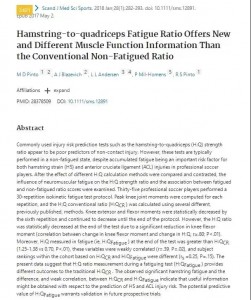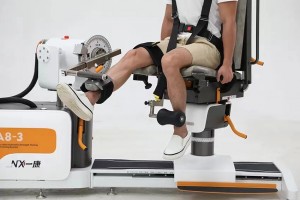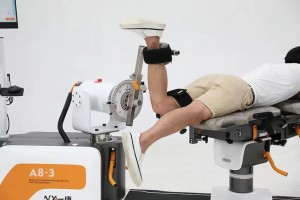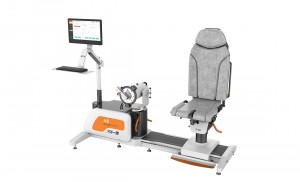What metrics are needed for a group of mutually antagonistic muscle groups that stabilize a joint?For example: biceps and triceps, abdominal and low back muscles, quadriceps and hamstrings, triceps and anterior tibialis, etc. Do these antagonistic muscle groups have anything to do with protecting the spine and protecting the joints? Let’s start with a paper on the significance of the ipsilateral hamstring to quadriceps ratio (H:Q).

This is an article published by Matheus Daros Pinto and Anthony J. Blazevich and Lars L. Andersen et al. in the Scandinavian Journal of Medicine & Science in Sports in 2018. The article focuses on “New developments in the hamstring to quadriceps ratio (H:Q)”. The article combines previous research to conclude that generic injury risk prediction tests, such as H:Q, do not appear to be good predictors of non-contact injury. This is because these tests are essentially performed in a non-fatigued state, but cumulative fatigue is an important risk factor for hamstring strains and anterior cruciate ligament injuries in the legs of professional athletes. In the article, after comparing the effects of different methods of H:Q calculation, the effect of neuromuscular fatigue on H:Q and the correlation between fatigue and non-fatigue state (H:Q) ratio scores were considered, and 30 repetitions of isometric muscle strength tests were performed on athletes.

The test results showed that the conventional H:Q was the result of a centripetal contraction test with slow, alternating knee extension and flexion, that the angular velocity of the knee was higher during the actual exercise, and that the movement was a combination of centripetal – centrifugal contraction patterns. The data suggest that the H:Q values in the fatigued state are greater than those in the non-fatigued state, with a weak correlation between the two. The article deals with an important index of the isometric muscle testing system, the ratio of peak moments of active and antagonist muscles, which is determined by the ratio of peak moments of the two muscle groups, active and antagonist, at different exercise speeds and different joint angles, and is generally more commonly used in a slow exercise mode of 30-60 degrees/sec, or according to the needs Different speeds can be set according to the needs. It reflects the muscle balance between the antagonist muscle groups during joint activity, and is of some significance in determining joint stability and predicting potential joint injury, especially the knee flexion/extension ratio of the lower extremity is most meaningful in clinical practice.
Learn about product: https://www.yikangmedical.com/isokinetic-training-equipment.html
Post time: Mar-20-2023






